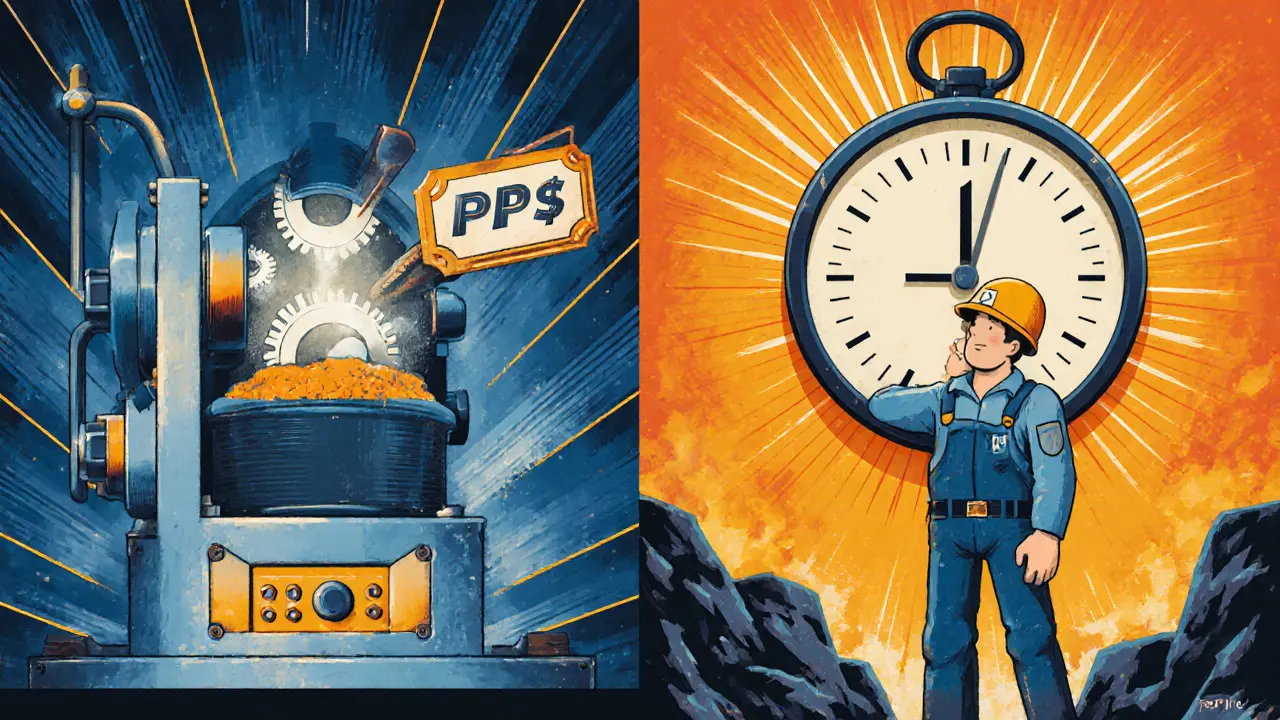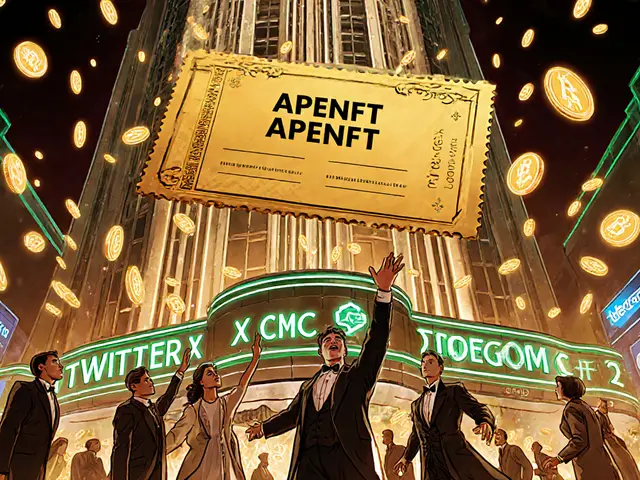Mining Pool Payout Calculator
PPS Pay Per Share: Fixed earnings per share submitted
PPLNS Pay Per Last N Shares: Earnings based on shares in recent blocks
PROPORTIONAL Pay Per Block: Earnings based on shares to the block found
When you mine Bitcoin or another cryptocurrency, you’re not just competing against other miners-you’re competing against the entire network’s combined power. The odds of finding a block on your own are tiny. That’s why most miners join mining pools. But how do these pools actually split the rewards? It’s not as simple as splitting cash evenly. The method used can mean the difference between steady paychecks and wild income swings.
What Is a Mining Pool?
A mining pool is a group of miners who combine their computing power-hashrate-to increase their chances of solving a block and earning the reward. When one miner in the group finds a block, everyone gets paid based on how much work they contributed. Without pools, solo miners might wait months or even years to earn a single Bitcoin. With a pool, you get smaller, more frequent payouts.The system works because each miner submits shares. A share is a proof-of-work solution that meets the pool’s difficulty level-but not the blockchain’s. Think of it like a progress ticket. Every time you submit a valid share, you’re proving you’ve done your part. The pool tracks these shares to decide who gets paid and how much.
Pay-Per-Share (PPS): Predictable Pay, Higher Fees
If you want your paycheck to look like your salary-same amount every day-PPS is your best bet. Under this system, the pool pays you a fixed amount for every valid share you submit, no matter if the pool finds a block or not.For example, if your share is worth 0.0001 BTC and you submit 1,000 shares in a day, you get 0.1 BTC-even if the pool didn’t find a single block that day. That’s stability. But there’s a catch: the pool takes on all the risk. If they go days without finding a block, they still owe you. To cover that risk, PPS pools charge higher fees-often 2% to 5%.
PPS also usually doesn’t include transaction fees from the block. Those go to the pool operator as part of their compensation. So while your income is steady, it’s not always the highest you could earn. But if you’re mining on a budget, or you’re not ready to handle income swings, PPS gives you peace of mind.
Pay-Per-Last-N-Shares (PPLNS): Reward Loyalty
PPLNS is the opposite of PPS. Instead of paying you for every share right away, the pool looks back at the last N shares you submitted-usually over the last few blocks-and pays you only when the pool actually finds a block.Let’s say the pool finds a block. The reward is 3.125 BTC plus transaction fees. The pool then calculates how many of the last 10 million shares came from you. If you contributed 2%, you get 2% of the payout. Simple. But here’s the twist: if you joined the pool yesterday and it finds a block today, you might get almost nothing. Why? Because your shares didn’t make up enough of the last N.
PPLNS is designed to stop pool hopping-when miners jump between pools to chase short-term profits. If you leave after a big payout, you’re gone. If you stick around, your earnings slowly rise. Over weeks or months, PPLNS tends to average out to the same return as PPS, but with more volatility. The fees are usually lower too, since the pool isn’t paying out unless they mine a block.
It’s a gamble. But if you’re in it for the long haul and don’t mind waiting, PPLNS can be more profitable. Many top pools use this method because it keeps miners loyal.

Proportional (PROP): Pay Only When the Block Drops
PROP is the oldest method and the most straightforward. When the pool finds a block, rewards are split based on the percentage of shares each miner contributed to that specific block.Imagine the pool needed 1,000 shares to find a block. You submitted 100 of them. You get 10% of the reward. Simple math. But if the pool doesn’t find a block for a week, you get nothing-even if you submitted 10,000 shares. There’s no payout until the block is found.
PROP is fair, but it’s also unpredictable. A miner could work hard for days and walk away empty-handed. That’s why it’s less popular today. Most miners prefer some level of consistency. Pools still use PROP sometimes, but it’s mostly replaced by PPLNS, which is more resistant to manipulation and gives better long-term results.
Solo Mining: All or Nothing
Solo mining means you’re not in a pool. You mine alone. If you find a block, you get the full 3.125 BTC plus all transaction fees. If you don’t? You get nothing.This method only makes sense if you have massive hardware-think dozens of ASICs running 24/7. For most people, the odds are astronomically low. Even with a top-tier ASIC, you might wait months or years to find a block on your own. That’s why solo mining is rare today, mostly used by large mining farms with serious infrastructure.
It’s the riskiest option. But if you hit that jackpot, you keep 100% of the reward. No pool fees. No middleman. Just pure, uncut Bitcoin.

What Hardware Do You Need?
You can’t mine Bitcoin with your laptop anymore. The difficulty is too high. Today, you need either a GPU or an ASIC.GPUs are versatile. They can mine Ethereum, Monero, and other coins. But for Bitcoin? They’re too slow. ASICs are built for one thing: mining Bitcoin. They’re faster, more efficient, and use less power per hash. But they cost $2,000 to $5,000 each. And if Bitcoin’s price drops, your ASIC might not pay for itself.
Most miners use ASICs in mining pools. The hardware is expensive, so you need to maximize your returns. That’s why choosing the right payout method matters even more.
Which Method Should You Choose?
There’s no one-size-fits-all answer. It depends on your goals.- If you want stable income and don’t mind paying higher fees → PPS
- If you’re in it for the long term and can handle ups and downs → PPLNS
- If you’re looking for simplicity and don’t mind waiting → PROP
- If you have serious hardware and want maximum reward → Solo
Many pools now offer multiple payout options. You can switch between them. Try PPLNS for a month. If the swings are too stressful, switch to PPS. There’s no lock-in.
Also, don’t ignore fees. A pool with 1% fees and PPLNS might pay you more than a 4% PPS pool-even if the PPS pool pays every day. Do the math. Track your earnings for at least 30 days before deciding.
The Future of Mining Pool Rewards
New systems are being tested. Some research from early 2024 explored decentralized reward sharing using blockchain protocols. Instead of a central pool operator, miners could use smart contracts to distribute rewards automatically. No middleman. No trust needed.It’s still experimental. But the trend is clear: miners want fairness, transparency, and control. The old models-PPS, PPLNS, PROP-are still dominant because they work. But the next wave might be even more decentralized.
For now, stick with what’s proven. Pick a pool with good uptime, low fees, and a payout method that matches your risk tolerance. And remember: mining isn’t get-rich-quick. It’s a steady grind. Choose wisely.
How often do mining pools pay out?
It depends on the payout method. PPS pools pay for every share, so you might get daily or even hourly payments. PPLNS and PROP pools only pay when the pool finds a block, which could be once a day, once a week, or less. Most pools have a minimum payout threshold-like 0.001 BTC-before they send you coins.
Can I mine multiple coins in the same pool?
Most mining pools specialize in one coin. Bitcoin pools only mine Bitcoin. Ethereum pools mine Ethereum. Some pools support algorithm-switching coins like Ravencoin or Ergo, but you can’t mine Bitcoin and Monero in the same pool at the same time. Your hardware and software must match the coin’s mining algorithm.
Why do some pools charge higher fees than others?
Fees cover operational costs: server upkeep, software, electricity for the pool’s own hardware, and risk. PPS pools pay you even when they don’t find blocks, so they charge more to cover that risk. PPLNS pools only pay when they mine, so they can afford lower fees. Higher fees don’t always mean better service-check the pool’s uptime and payout history.
What’s pool hopping, and why is it bad?
Pool hopping is when miners switch between pools to chase the highest short-term rewards-like jumping to a pool right after it finds a block. This hurts the pool because it loses consistent hashrate. PPLNS was created to punish this behavior: if you leave after a payout, your shares disappear from the calculation, and you earn less. Long-term miners benefit; hoppers lose out.
Do mining pools affect Bitcoin’s decentralization?
There’s concern. If just a few pools control most of the network’s hashrate, they could theoretically collude or censor transactions. That’s why regulators and developers watch pool concentration closely. Most major pools voluntarily limit their hashrate share. As of 2025, no single pool holds more than 15% of Bitcoin’s total hashrate.



